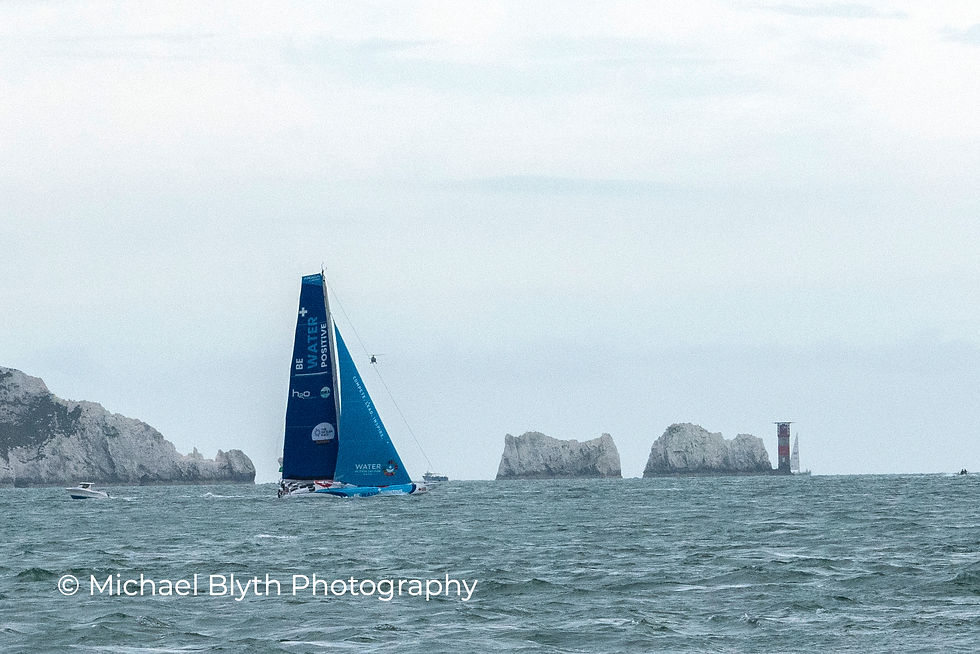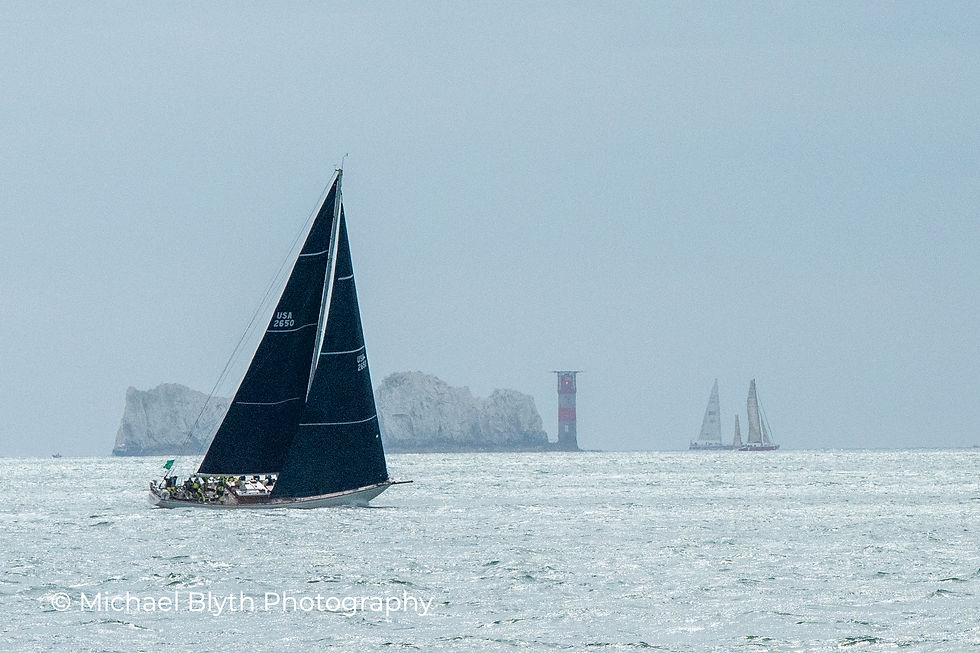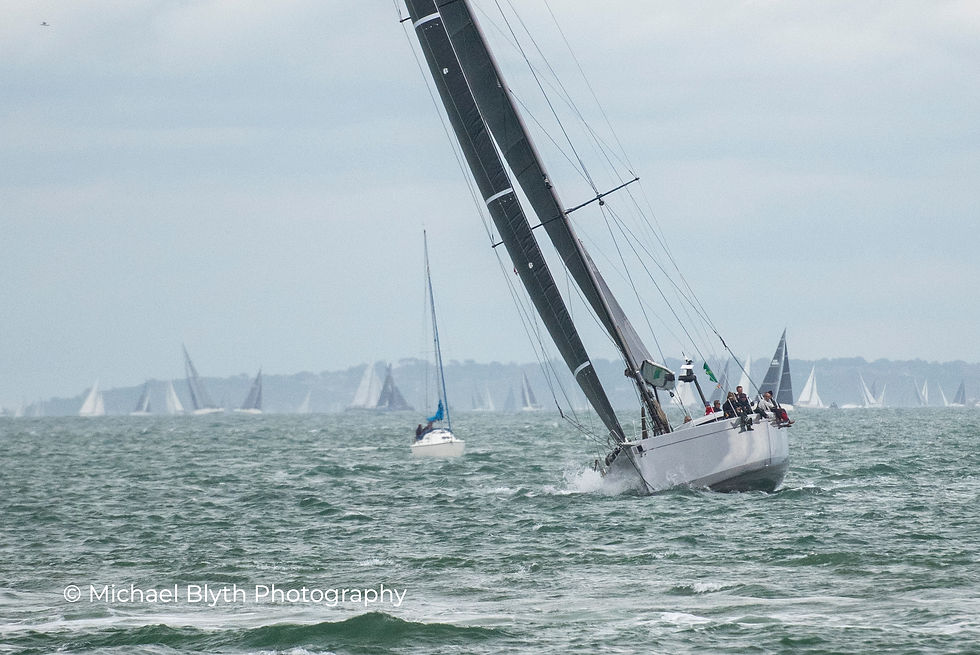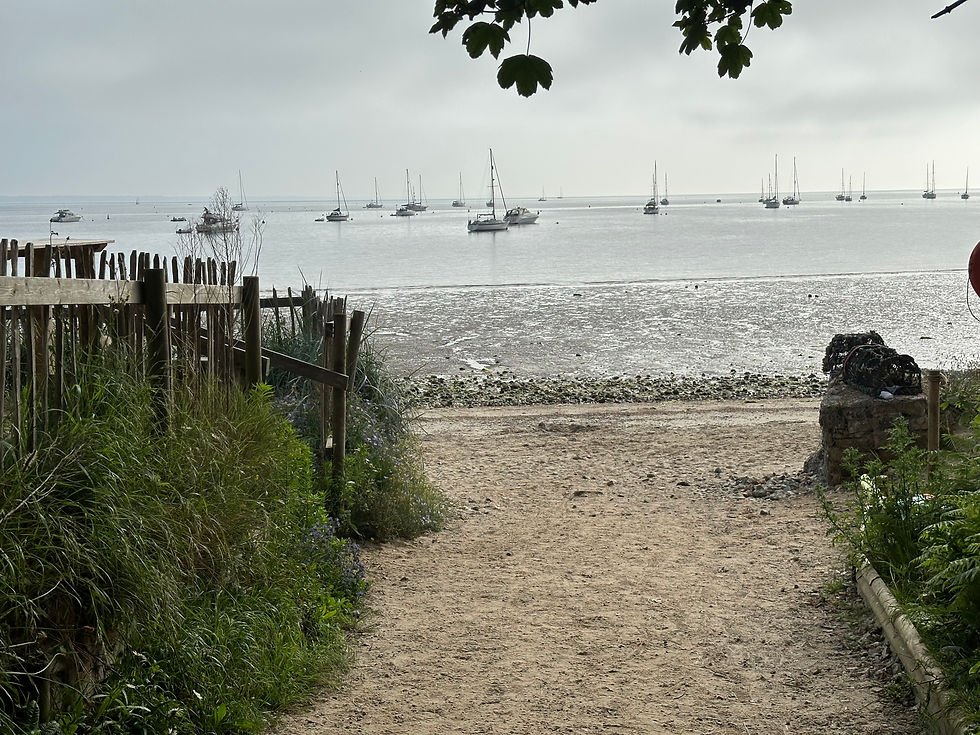Simple Photography Tips - The rule of vertical thirds
- Michael Blyth

- Jul 30
- 5 min read
Six simple photography tips on using the 'rule of thirds' in photographic composition - Camera and Phone Camera
Imagine three vertical lines running across each scene as you compose it
Place significant features on or near that line
If you have the option set your phone or camera to show a 'thirds' grid, it makes it easier
If you like the composition, take the picture
With photographs you can 'get away with' breaking the rule, but it often works well
If you have a complex picture, place different aspects on different thirds
I'm forever referring to the 'rule of thirds', that series of imaginary lines that sit grid-like on any scene, and indeed not so imaginary on the 'viewfinder' of some cameras and phones.
Imagine three vertical lines running across each scene as you compose it
The purpose, and the reason I keep referring to the rule, is that the placement of the subject or subjects of interest on these lines can make the picture sit comfortably to the eye, and is borrowed from conventional artistic composition.
This article is based upon the 2025 Fastnet Race, the 100th to take place. I was up aiming to get some good images for Yachting Monthly magazine.
Although using a power boat would give more flexibility, using a relatively static site, in this case Hurst Castle Spit, with a known background has advantages of stability - as an aside Simple Photography Tip; small power boats are usually very low, and move a lot, and I mean a lot!
And cameras don't like getting wet.

Images one shows the Canada Ocean Racing yacht Emira VI heading out past The Needles as it exits the Solent.
I've placed the yacht a third of the way across the scene, with the bow pointing 'into' the picture. The mast sits comfortably on the left hand third, and the hull of the boat is right on where the vertical and horizontal thirds.
The Needles Lighthouse, one of two important ones on this race, the other being the Fastnet, round which the yachts turn and head back, is placed on the right hand 'third'
If you imagine a grid over this image (or with you, maybe turn on the thirds grid in your camera), the lines divide the frame into thirds — both horizontally and vertically. Where these lines intersect are known as the intersecting thirds - there are four of them.

Similarly Image Two, with a beautiful yacht called Hound, I've used more or less the same composition. This draws your eye to the subject, without needing to force it. It creates a feeling of balance and asymmetry that I love.
The big difference visually from Image One, is the light. After a dull morning, with spitting rain, the sky cleared from the west, and the hazy sun covered the sea in sparkle dust, seperated the background from the foreground and set the image alight.
There is a sense in both images that The Needles lighthouse adds visual balance to the image. I would love to see this yacht with white sails, but accept the advantages of carbon-fibre sails.

The goegraphy of Hurst Spit is such that I was able to roam, and that itself gave me freedom to photograph yachts coing out of the solent, passing through the narrows, (frustratingly most went the other side in response to wind direction and tidal currents.
A few however, chose the inner route, and Image Three, is the type of image that would normally require a boat to photograph from. Not easy with a phone camera, but fine for a hi res.
This 23.2m yacht La Loévie is heading straight towards me, then drops slightly downwind before tacking (turning) back into the main part of the channel. It's at the dip point that I've caught her, giving a slightly more pleasing composition and showing more of the crew siitng to windward.
Placed on the right hand 'intersecting third', her heel is into the picture, as are her bows. If she was in that part of the image, but heeling and heading in the other direction, the image would not have the feeling of balance that it does. Although perhaps more dramatic?

In Image Four, the two yachts sailing away from me make this image ping. Not they both lean in unison, Bedouin on the left is a couple of degrees or so to windward of Hound, taking the eye to a converging point, which would not be so if they were literally parallel.
I've waited until they both sit on opposite 'intersecting thirds'. There is the further compositional bonus that the yacht on the far left balances the heeling of Bedouin, likewise Hound is balanced by the yacht beyond her.
The middle yacht and the Needles Lighthouse hint at a centre of focus.

In image Five, Hound has tacked, while Bedouin continues. This changes the balance if the image and it is a much more left and right thirds bi-focused image. Bedouin and the yachts beyond form a 'group' on the left 'intersecting vertical' and Hound with a more dominant mainsail links with the lighthouse on the opposite 'third'.

Image Six displays and interesting balance of features. At first glance you have the three racing boats sitting on the left, middile and right vertical 'thirds', with the water level more or less on the middle 'horizontal third'. Forming a well balanced image in that sense, but there is an interesting 'line of sight' feature as well, which adds depth to the image.
If you run a line across the top of the masts, and another along the line of masts, the two meet at the Needles Lighthouse. The overall effect visually, is to give the impression of speed, which in this context is positive.

Image Seven is an enigma. Callisto sits more or less on the 'right vertical third', and Van Uden on the left one, so should in theory form a balanced image.
The problem is two-fold, Van Uden is more distant, and at a slightly different angle to the wind, with less sail visible, so a less significant 'weight'.
Callisto on the other hand has more sail showing, is closer, giving a bigger 'weight' to the image, but further, there are a bunch of yachts forming visual addition to that side.
The effect is in fact so imbalanced, that the 'rule of thirds' ceases to function, and the image looks about to tip over.
Were I to do some post production and fade or remove the extra yachts, all would return to a pretty good balance.


Comments